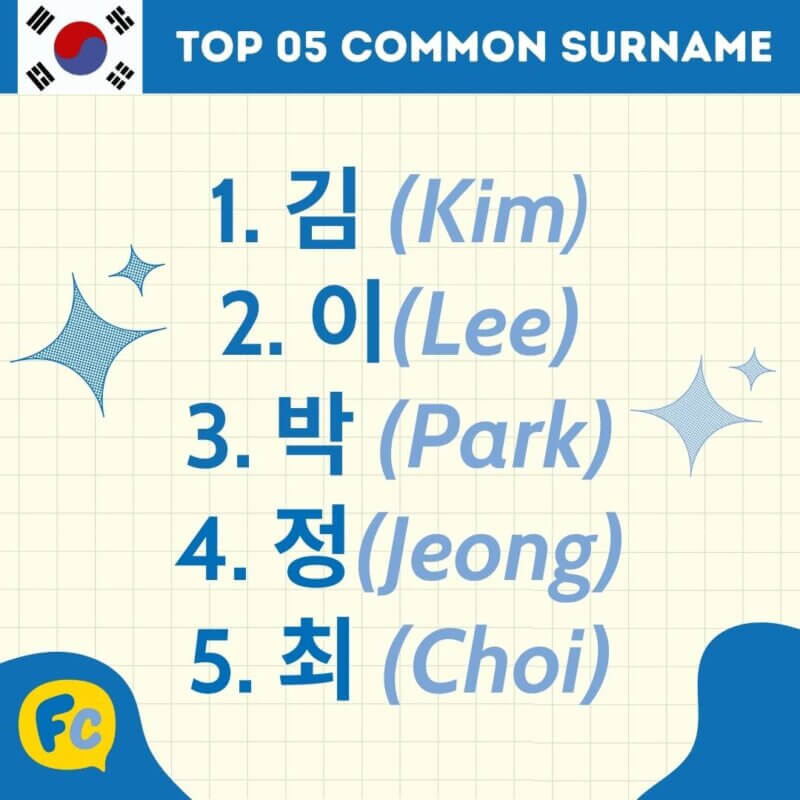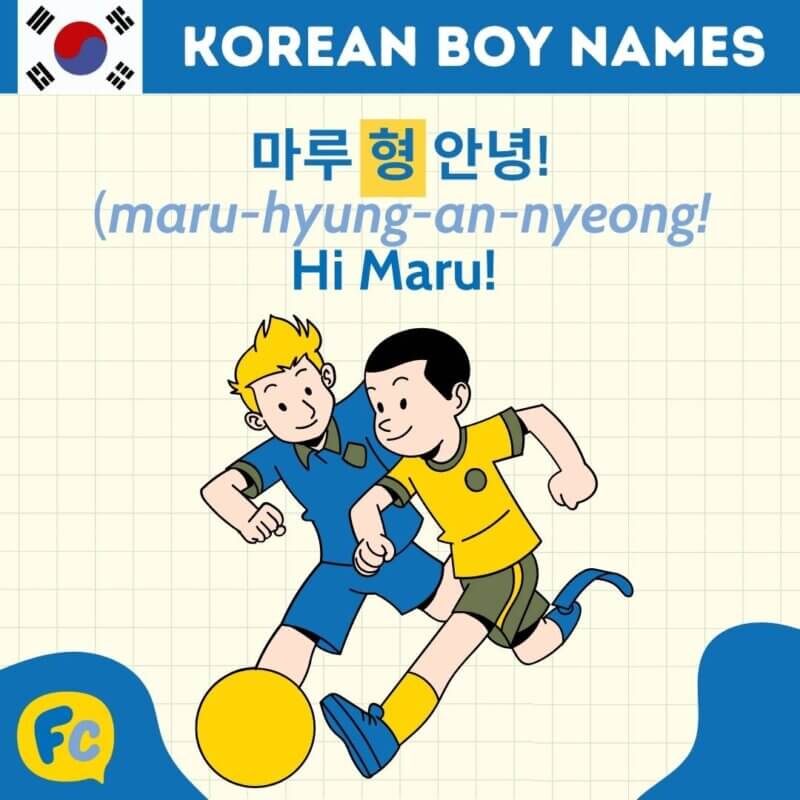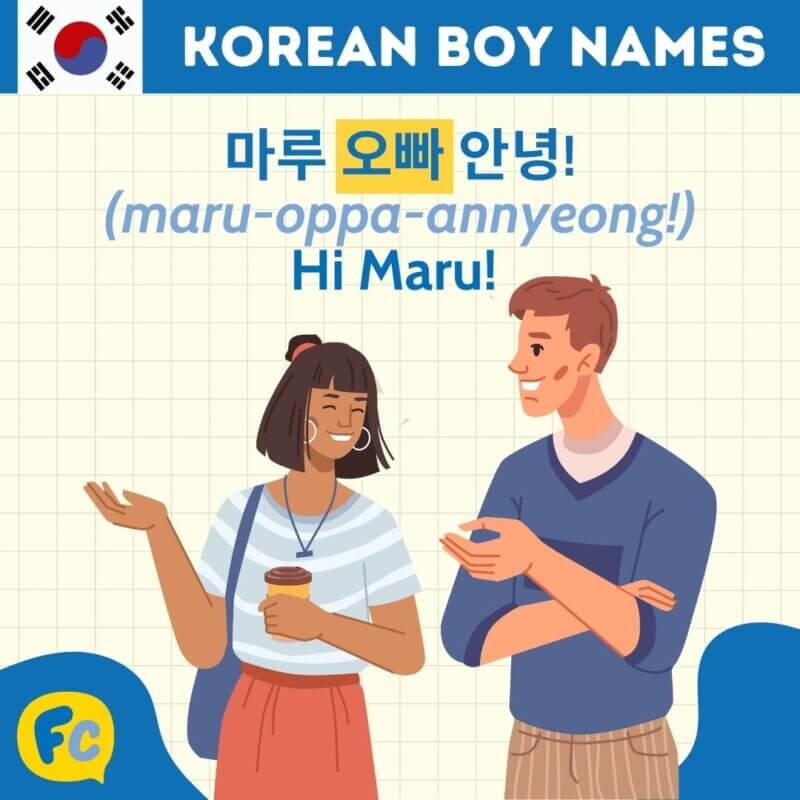Top Korean Boy Names: Meaning, Order and Pronunciation
Explore Unique Heritage – Discover the Meaning Behind Korean Boy Names!

✨ Our names are such an important part of our identity.
After all, names give us a sense of belonging to both our families and our cultures.
They are not just labels; they carry stories, histories, and identities that shape who we are. From the moment we are introduced to someone, their name creates an immediate connection.
In many cultures, names are chosen with great care, often reflecting values, aspirations, or ancestral heritage. This significance makes names a powerful aspect of our identity, influencing how we perceive ourselves and how we are perceived by others.
Let’s find out how Korean Boy Names
were made throughout history.
⬇️ Interested in something specific? Clicking on the link will bring you to your preferred section!
Korean Boy Names | History of Korean Names
Korean Boy Names | Traditional Korean Names
Korean Boy Names | Popular Boy Names Now
Korean Boy Names | What Does 오빠 (oppa) and 형 (hyung) Mean in Korean
Korean Boy Names | FAQs
History of Korean Names

✨ In Korean, there is a saying 서울에서 김서방 찾기 (seoul-e-seo kim-seo-bang chat-gi). This expression translates to Looking for a Mr. Kim in Seoul. This metaphor has the same meaning as ‘finding a needle in a haystack’.
If you have experienced living in Korea, you probably know what I am talking about. Probably 1 in every 8 people is Kim.
There are five surnames most common in Korea:
| 김 | Kim |
| 이 | Lee |
| 박 | Park |
| 정 | Jeong |
| 최 | Choi |
But not all Kims, Lees, Parks, Jeongs, and Chois are the same.
Most Korean names have two parts: a family name and a given name.

✨ Traditionally, a child takes their father’s surname, but Korean women do not take their husband’s surname after marriage.
Korean family names are often one syllable, with a few exceptions, and are subdivided into different 본관 (bon-gwans).
본관 (bon-gwans) refers to a name’s origin and distinguishes between different clans with the same surname. For example, the two most common Kims in Korea are Gimhae Kim from Gimhae and Gyeongju Kim from Gyeongju. Despite the identical surname, the respective 본관 (bon-gwans) differentiates the two Kims.
Further, the two most common Lee in Korea are Jeonju Lee from Jeonju and Gyeongju Lee from Gyeongju.
The number of surnames has increased by nearly 800% between 2000 and 2015 due to an increase in naturalized citizens.
According to a recent population and housing census in 2015 by Statistics Korea, there are 286 hanja (한자, 漢字) – the Korean writing system based on traditional Chinese characters – surnames and around 858 clans that have more than a thousand people.

10 Common Korean Curse Words 🤬 Speak Like a Native
There’s no better way to speak like a native to use a swear word or two. The Korean language is no exception, check out 10 Korean Curse Words to learn.
Traditional Korean Names
✨ Korean given names are often two syllables.
One syllable traditionally notes the biological generation of the child. The representative syllable for each generation is chosen at the 본관 (bon-gwan), or the direct descendants of the family.
This syllable was traditionally given to sons who continued the family’s lineage, but today, it is also given to daughters or sometimes omitted. The generational syllable helps determine one’s generation and acts as an indicator of seniority among family members.
The remaining syllable is the unique syllable of the child. A few combinations were chosen by the grandfather, the eldest family member, or at a naming center called a 작명소 (jakmyungso), which studied the child’s 사주 (saju), a Chinese astrological concept to select the best syllable to combine with the generational name. The final decision was then made by the child’s parents.
For instance, if the first son was born to a Lee’s family, the most senior of the 본관 ( (bongwan) which usually is the family’s grandfather, will choose one character that will be used continuously for newborns in that generation. This character is called 돌림자 (dol-lim-ja) in Korean and means repetitive character.
Traditionally, 돌림자 (dol-lim-ja) was commonly used for many Korean boy names. After the most senior of the family creates a character to use as the 돌림자 (dol-lim-ja), they will then use it to create the other character. Most names will be made after studying their 사주(soju).
For instance, if a baby is born on a certain day and needs more water or wood in their fortune, the family will consider a related character.
| Term | Definition |
|---|---|
| 돌림자 (dol-lim-ja) | Repetitive character used for a generation within a family. |
| 본관 (bon-gwan) | The direct descendants of a family. |
| 사주 (saju) | Chinese astrological concept used to select auspicious characters for a name. |
| 작명소 (jakmyungso) | Naming center that studies a child’s 사주 to recommend names. |
✨ Here are some examples of names with 돌림자 (dol-lim-ja).
인 (in, 仁) is a character that means benevolent or generous. This might be used in a certain family for all the boys that will be born in the same generation.
If the first son has two sons and the second son has another son, they will all be using the same 돌림자 (dol-lim-ja) for the boy names.
Most families will include girls for the 돌림자 (dol-lim-ja) as well.
Let’s say a first child was born to Kim’s family. The 본관 (bongwan) decided to use the character 인 (in, 仁) as the 돌림자 (dol-lim-ja). After careful consideration of all the Chinese astrological concepts, let’s say they felt that the character 건 (gun, 建) which means to build, best suits the child, the child will either be called 김인건 (kim in gun, 金仁建) or 김건인 (kim gun in, 金建仁)depending on where the 돌림자 (dol-lim-ja) will be placed, first or last.
If a child is born to a Lee family and the 본관 (bongwan) decides to use 태 (tae, 太) which means great as the 돌림자 (dol-lim-ja), a boy could be named with the 태 (tae, 太) as the first or last character.
| Family | character | Example Name | Meaning |
|---|---|---|---|
| Lee | 태 (great) | 이태민 (Lee Tae-min) | Great Min |
| Kim | 인 (benevolent) | 김인건 (Kim In-gun) | Benevolent Gun |

14 of the Best Korean Streaming Platforms 🍿
Where to watch Korean dramas? That is definitely a question we all asked ourselves! We listed 12 of the best Korean streaming platforms for you.
Popular Boy Names Now
✨ Today, some people choose not to use the generational syllable for various reasons. Some consider it an old tradition, while others prefer to increase the pool of possible names for their child. Moreover, as parents choosing a pure Korean name have increased, many have dropped the generational syllables, which are mostly based on 한자 (hanja).
Examples of Popular pure Korean names:
마루 (Maru) is a Korean word that means the peak.
A boy would be given this name in hopes of being at the top of everything he does.
하람 (Haram) is a popular Korean name that chose two characters from two words: 하나님의 사람 (hananim-e saram), which means ‘God’s person’.
The character 하 (ha) from 하나님 (hananim) and 람 (ram)
from 사람 (salam) was chosen for this name.
Here are 10 more examples of Korean names and their meaning:
| Korean Name | Pronunciation | meaning |
|---|---|---|
| 대현 | Dae-Hyun | Great and shining; clever |
| 동근 | Dong-geun | East and roots; foundation |
| 서준 | Seo-jun | Auspicious and talented |
| 도윤 | Do-yun | Path; way and allow |
| 은 | Eun | Kindness; charity |
| 하늘 | Haneul | Heaven; sky |
| 힘찬 | Him-chan | Strong; powerful |
| 호석 | Hoseok | Strong; tiger and stone |
| 하루 | Haru | Day |
| 지훈 | Ji-hun | Wisdom and purpose |
What Does 오빠 (oppa) and 형 (hyung) Mean in Korean


✨ In Korea and other Asian countries, you won’t always call people by their names.
If you are a boy and calling an older male, you will address him as 형 (hyung). You can sometimes put their name in the front of 형 (hyung).
For example:
마루 형 안녕!English: Hi Maru!
| Korean | transliteration | Meaning |
|---|---|---|
| 마루 | Maru | Name |
| 형 | hyung | Word to address an older male |
| 안녕 | an-nyeong | Casual form of hello |
If you are a girl and calling an older male, you will address him as 오빠 (oppa).
마루 오빠 안녕!English: Hi Maru!
| Korean | transliteration | Meaning |
|---|---|---|
| 마루 | Maru | Name |
| 오빠 | oppa | Word to address an older male |
| 안녕 | an-nyeong | Casual form of hello |
✨ Names are such an interesting topic to talk about.
The next time you meet a friend, ask them about their names and how it came to be!
This would be an interesting topic to discuss.
TOP – BONUS | Interested in Boy Names from different cultures? Take a look at our comprehensive guide to Chinese names and find out the most common surname in China!
You can also explore how names function in Vietnam with our guide to Vietnamese names.
Korean Boy Names | FAQs
What is the most popular Korean boy name in 2024?
서준 (seo jun) and 하준 (ha jun)
The meaning of the names could vary depending on the characters used.
What are the least popular names in Korea?
These depends on personal preference but now the trend least favors names that ends with 철 (chul), 봉 (bong), or 필 (pil) that gives off a very old fashion name.
What is a popular neutral name in Korea?
수민 (soo-min) is a good example of a neutral name that suits both girls and boys.
Want More From LTL?
FANCY LEARNING KOREAN? Check out our online Korean courses here.
We offer a 7-day free trial to all online students where you can study Korean 24/7.
Want to study Korean in Korea instead? Our Korean courses in Seoul can either be taken in small groups of no more than 5 students or individually for a more tailored experience.
We even offer incredible homestay experiences in Seoul too.
To top it all off, it certainly doesn’t end with Korean. Check out the other languages we teach 👇🏻









